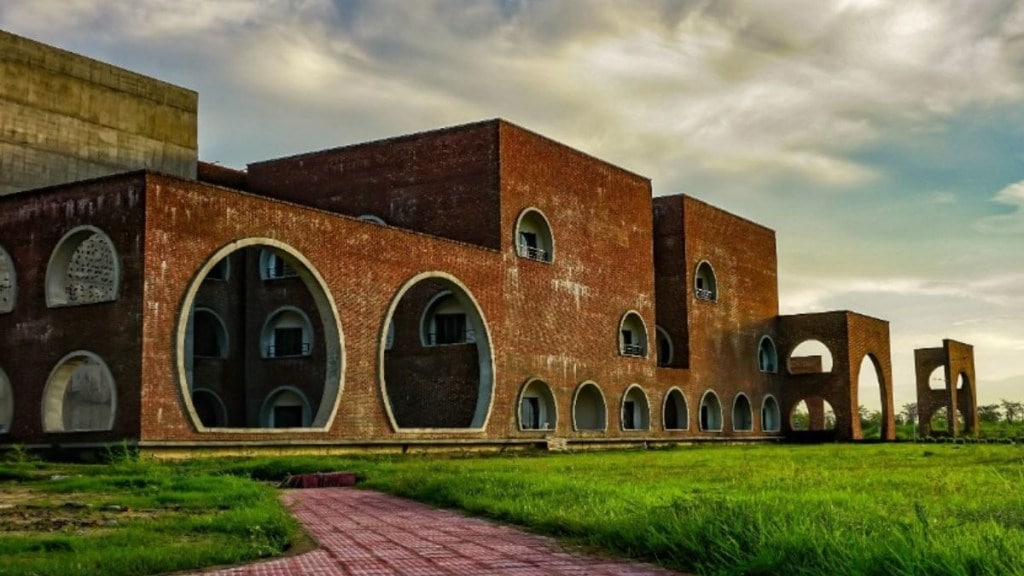In this year’s NIRF (Management) rankings, the biggest news was IIM Kozhikode displacing IIM Calcutta as India’s third-best B-school — here was a second-generation IIM beating the first-generation one — but what many people didn’t notice was the almost-meteoric rise of a third-generation IIM in the last two years.Uttarakhand-based IIM Kashipur has jumped 14 places — from 33rd best B-school in India in the 2021 NIRF rankings, to 19th in NIRF 2023.
Next-gen courses
Prof Kulbhushan Balooni, director, IIM Kashipur, told FE that a focus on next-generation courses, on social inclusion, one of the best faculty-student ratios and excellent work on the research front has been noticed by the NIRF and rewarded.“Since the beginning (IIM Kashipur was set up in 2011) we have had a very strong focus on new-age courses such as critical thinking, interpersonal & individual behaviour, design thinking & entrepreneurship, and leadership communication to help students make a smooth transition from their humble backgrounds to serious and important decision-making roles in industry,” he said. “We are young and nimble, and can take quick decisions. For example, we were the first IIM to initiate the MBA (Analytics) programme.”
Research
He added that the number of publications and citations being produced at IIM Kashipur has increased significantly, which has given its ranking a boost. “Our number of publications increased from 26 in 2018 to 71 in 2022, whereas the number of citations grew almost 11 times in four years — from 131 in 2018 to 1,426 in 2022 (see table),” he said. “Our research is getting published in esteemed peer-reviewed journals, and that really matters.”In the research, professional practice and collaborative performance (RPC) component of the NIRF, the institute had a score of 26.53 (out of 100) in 2021, which rose to 28.25 in 2022 and 36.8 in 2023. While it’s much less than 50-plus RPC scored by top B-schools, IIM Kashipur seems to be getting there.Prof Kunal K Ganguly, dean (Development), added that the institute has improved in terms of quality intakes of doctoral scholars. “Our faculty-student ratio has improved significantly, and campus placements recruitments have increased both in size and scale, with increased CTC.”
Social inclusion
IIM Kashipur provides a generous scholarship portfolio, offering a full waiver of tuition fees to 12-15% of students. “A lot of our students are meritorious, having scored well in the Common Admission Test (for entrance into IIMs and some other B-schools), but some of them may not have the financial means to get into an IIM,” Prof Ganguly said. “We’ve decided that no student will be turned away from the gates of the IIM for want of fees.”Prof Preeti Narwal, assistant professor of Marketing, said that in addition to an increasing number of female students, “we have amazing regional diversity, with students from around 26 states on our campus, making IIM Kashipur a mini-India.”
Non-metro location
Being physically located in a non-metro area isn’t a disadvantage in the post-Covid-19 age. Prof Balooni said there is a lot of industry in and around Kashipur, who need good managers, and this IIM is their management talent pipeline. Also, unlike previous times when recruiters (from companies located in far-off areas such as Delhi, Mumbai or Bengaluru, or abroad) had to mandatorily be on the campus to hire, they can now do the interview process online.“In the age of the Internet, nothing is remote,” he said.
Perception
The NIRF 2021 rated the ‘perception’ of IIM Kashipur at just 21.81 (out of 100), but it increased to 32.71 in 2022 and 33.92 in 2023. Prof Utkarsh, assistant professor of Marketing, said that IIM Kashipur has started to enter the consideration set of more people than ever before. “Our initiatives in the areas of experiential learning, start-up incubation, innovation, society outreach and improved media visibility have contributed to improved perception,” he said.
Next goal
While Prof Balooni didn’t talk about the IIM Amendment Bill or when can IIM Kashipur enter the coveted top-10 of NIRF, he said the aim is to achieve high standards in management education and improving the quality of research. “These steps will start to result in improved ranking sooner or later,” he said. “Our immediate focus is more on research and building an efficient start-up incubation ecosystem, as also industry outreach for securing high-quality placements for students. The alumni base is actively engaged as brand ambassadors.”There are 21 IIMs in India: the first-generation IIMs of Ahmedabad, Bangalore and Calcutta (set up during 1961-73), the second-generation IIMs of Lucknow, Kozhikode, Indore and Shillong (set up from 1984 to 2007), and the third-generation IIMs that were set up 2010 onwards.The most recent IIM is also one of the oldest — the IIM Amendment Bill 2023 made the National Institute of Industrial Engineering (set up in 1963) as India’s 21st IIM. It’s called IIM Mumbai.

